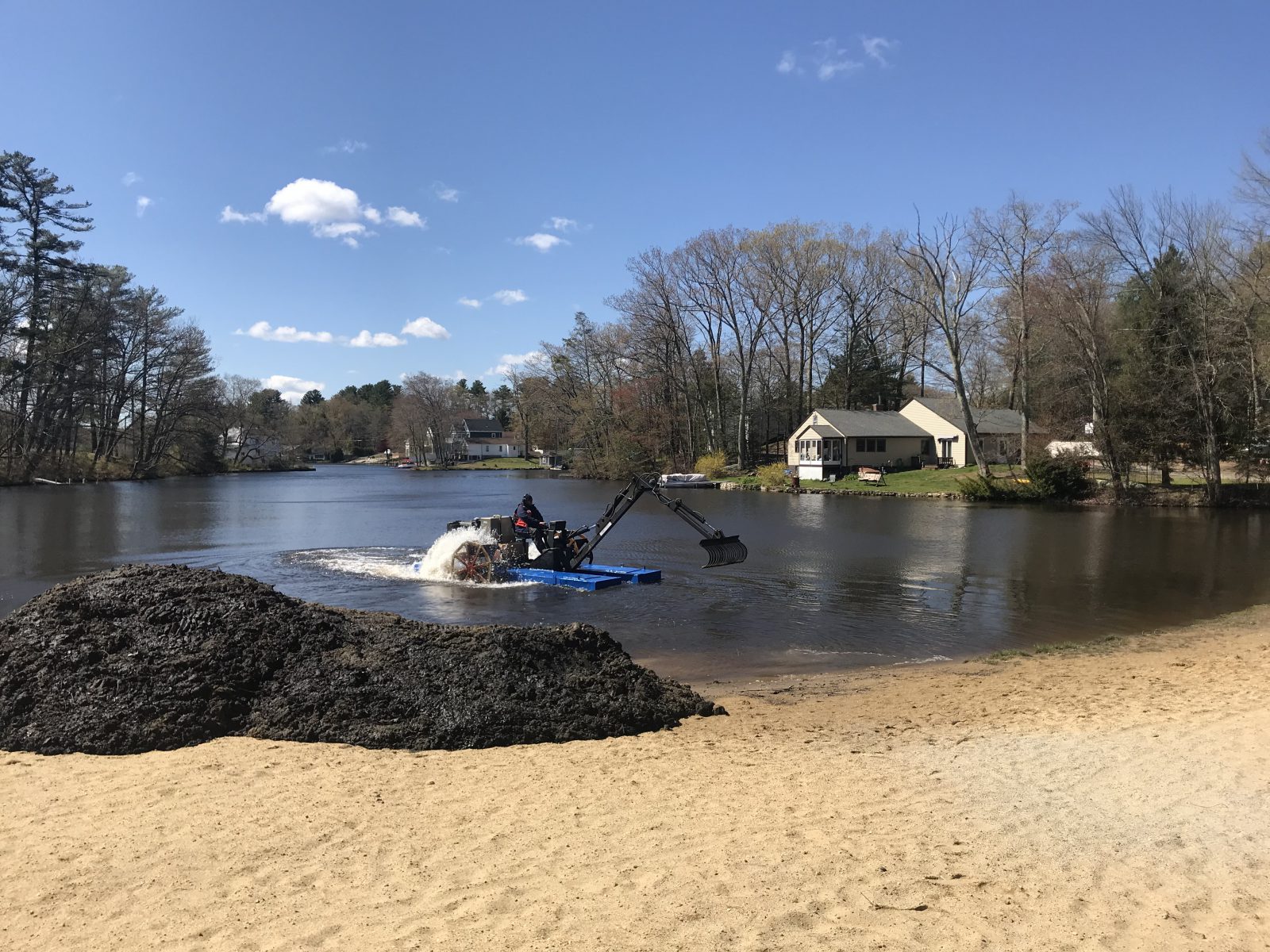
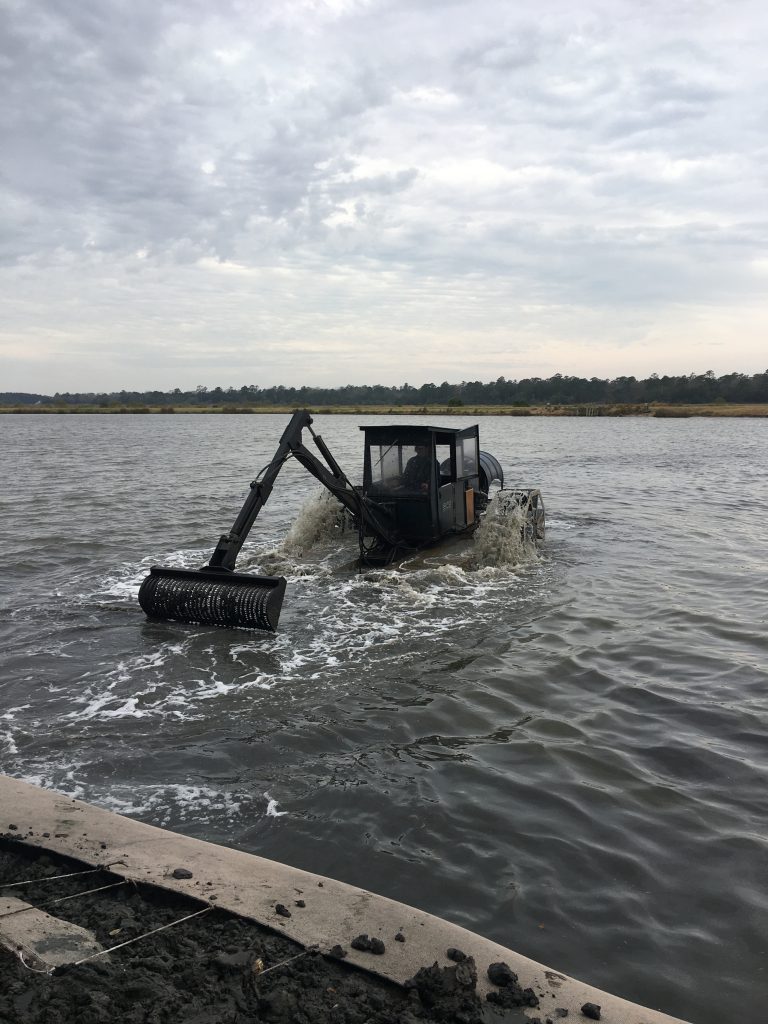
Prolong Stormwater Pond Dredging with This Alternative
Every community will, at some point, be faced with implementing water quality management strategies to slow or reverse the aging process of their stormwater pond. Size of the waterbody, overall condition and available budget will determine which management options you can consider.
When a stormwater pond’s function of collecting and retaining stormwater runoff is impaired due to accumulated organic and inorganic sediment, as well as nuisance aquatic vegetative growth, physical removal of this sediment and vegetation by dredging or hydro-raking should be considered. These two management techniques are typically considered once proactive management techniques are no longer feasible or effective to manage a pond. Determining which of the two management options is right for your community will be highly dependent on the management objectives, ecological goals desired and budget.
Dredging and hydro-raking both involve physical removal of debris and sediment, however each is used for varying reasons and outcomes. Dredging is heavily focused on both organic and inorganic sediment removal to restore pond depth. Hydro-raking offers a more selective and holistic management approach to removing aquatic vegetation, associated root structures, and organic matter, and also for restoring or maintaining pond depth.
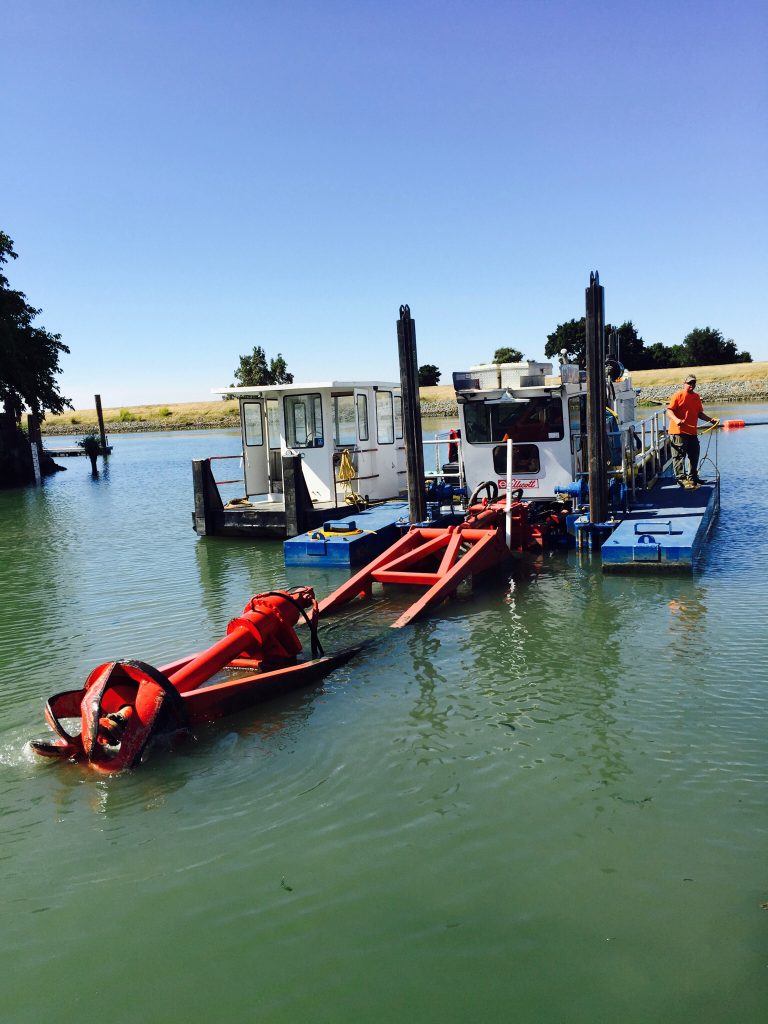
Remove Sediment with Dredging
In addition to increasing the volume of your pond, there are several other reasons to consider either dredging or hydro-raking. Removing sediment and vegetation will aid in the removal of excess nutrients such as phosphorous and nitrogen. When a stormwater pond becomes nutrient loaded, algae blooms can occur more frequently and the growth of nuisance aquatic vegetation can proliferate. Both techniques can also recoup habitat for beneficial aquatic flora and fauna to thrive in and minimize stagnant water, decreasing the potential breeding ground for mosquitoes.
While it is important to understand the outcome of using each strategy, it is equally as important to consider how each will affect the waterbody’s characteristics and inhabitants. Hydraulic/mechanical dredging with a cutting/vacuum mechanism or excavator temporarily alters the physical habitat and permanently removes existing aquatic life, whereas the York Rake attachment on the end of the hydro-rake allows aquatic organisms to escape. Both dredging and hydro-raking can temporarily affect water turbidity and decrease water quality through the release of nutrients and solids when the sediment is disturbed, but the extent of the effects varies by the magnitude of the project. Because of its aggressive and disruptive removal process, dredging has increased environmental effects on some waterbodies.
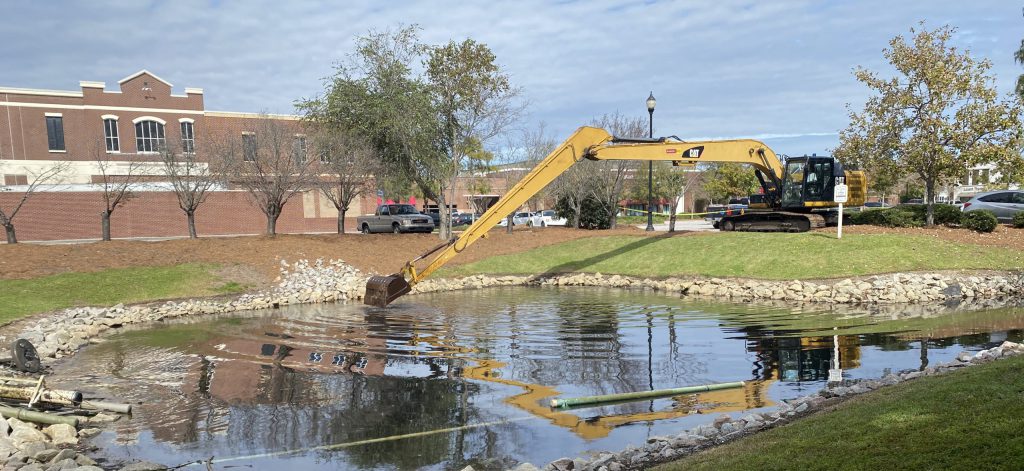
Dredging and Hydro-raking Considerations
Another consideration when determining whether dredging or hydro-raking is right for your community is the logistical plan for entering the waterbody and where the removed sediment will remain temporarily while it dries out. When hydraulic dredging, a large nearby area is required to pump the slurry for dewatering and disposal. When dry dredging, the whole waterbody is drained and sufficient shoreline access is needed for the trucking and hauling involved. Hydro-raking generally requires less preparation; involving the identification of a shoreline staging area to launch and remove the hydro-rake, off-load the material and a disposal plan. The duration of a dredging or hydro-raking project is contingent on the project objectives and management areas.
For a project of this magnitude, one of many community’s most important considerations is the budget. When dredging, there are considerably more permitting and design costs due to the magnitude of the project scope, equipment and planning necessary. Dredging may also require soil sampling which is an additional cost, based on state regulations. Hydro-raking is often times more economically feasible when compared to dredging, particularly with small scale (<5 acres) vegetation and hydro-soil removal projects. However, larger-scale hydro-raking projects can often be phased over a multiple-year period.
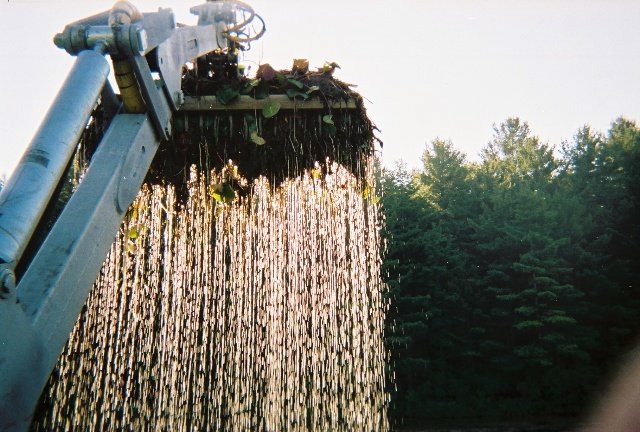
Remove Nuisance Plants with Hydro-raking
While both dredging and hydro-raking remove organic and inorganic sediment built-up on the pond’s bottom, they both offer varying services to a waterbody. Hydro-raking is frequently chosen as a method to remove nuisance aquatic vegetation, root structures, organic matter and debris to a smaller scale waterbody. Dredging is often a better alternative for large scale organic and inorganic sediment removal projects. If a pond is periodically maintained through hydro-raking, the need to perform a large scale dredge project may be negated, saving financial resources, and prolonging ecological disruption in the process. To determine if your Homeowner’s Association stormwater pond could benefit from hydro-raking, speak with your lake or pond management professionals.
Hydro-raking In Action
Contact Us to Learn More About Hydro-raking & Dredging
SOLitude Lake Management is a nationwide environmental firm committed to providing sustainable solutions that improve water quality, enhance beauty, preserve natural resources and reduce our environmental footprint. SOLitude’s team of aquatic resource management professionals specializes in the development and execution of customized lake, pond, wetland and fisheries management programs that include water quality testing and restoration, nutrient remediation, algae and aquatic weed control, installation and maintenance of fountains and aeration systems, bathymetry, shoreline erosion restoration, mechanical harvesting and hydro-raking, lake vegetation studies, biological assessments, habitat evaluations, and invasive species management. Services and educational resources are available to clients nationwide, including homeowners associations, multi-family and apartment communities, golf courses, commercial developments, ranches, private landowners, reservoirs, recreational and public lakes, municipalities, drinking water authorities, parks, and state and federal agencies. SOLitude Lake Management is a proud member of the Rentokil Steritech family of companies in North America.









